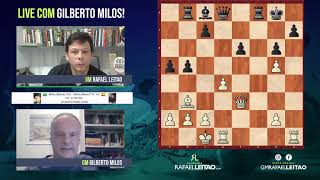The initial moves in a chess game generally have a great impact on its further development through the later stages. Therefore, it is important to consider a set of basic opening principles without taking excessive risks nor conceding too much to your opponent. Get to know the do’s and don’ts at the beginning of a chess game!
Central control
The four key squares in a chess game are ‘d4’, ‘d5’, ‘e4’ and ‘e5’. They represent the center in a chessboard and play a fundamental role in the success or failure of both attack and defense. Therefore, their control is highly advisable, either by indirect domination or direct occupation. To that effect, early advances of the d- and/or e-pawn are generally good practice. Many beginners are otherwise concerned on peripherical operations in order to free the rooks, but it is key to bear in mind that pushing the a- and/or h-pawn too early in the game tends to limit central control and hinders the development of other pieces which require higher priority.
Progressive development
You should always bear in mind that the development of your pieces should be carried progressively, which does not necessarily mean it will be slow. There are important development stages which allow for holding the balance of the basic opening principles. Knights and bishops are minor pieces when compared to queen and rooks, so it is better not to rush the development of the latter. Early development of knights and bishops help in controlling the center and helps preventing annoying attacks to the heavier pieces. Of course, this is a general rule; experience will always tell when it is best to break it.
King safety
The king is the main target in the chessboard so its safety should be a priority early in the game. The most common operation in that regard is castling, a combined move of king and rook which is only possible when they have not been moved before and there are no pieces in between them. Both kingside (short) and queenside (long) castling are possible, being the former the most popular. It is key to understand that following these three initial stages, the game is easier to play. Once the king is safe, piece development becomes more comfortable, especially if all this happens even before your opponent manages to put his own king to safety. Such an advantage makes your attacks safer and your defenses better structured, while easily targeting the center and your opponent’s key pieces.
Piece activity
In occasions, we tend to focus too much on concrete operations by certain pieces and ignore the proper development of others. It is highly recommended to activate all the pieces as soon as possible, bringing dynamism to our play. Therefore, it is best to refrain from moving the same piece twice or even going after pawn grabbing unless all your pieces are developed, and your king put to safety.
Do you have any other general idea about chess openings to be included in the list? Please do leave a comment!






It made sense when you said that the safety of the king needs to be prioritized during the early stages of the game. I think my son would enjoy learning to play chess online since he has a really logical brain and enjoys playing strategic games. Thanks for teaching me this info so I can review basic chess principles with him if he ends up being interested in the game! https://gmandreygutov.com/coaching-philosophy/